| Andere Namen | Mikroklinge |
|---|---|
| Herkunftsort | China |
| Anwendung | Metallverarbeitung, Fertigungsanlage, Bauarbeiten |
| Modellnummer | CB-PK |
| OEM-Service | Verfügbar |
| Zahlungsbedingungen | L/C, T/T, Western Union |
| Verpackung | Karton, Holzkisten |
| Lieferzeit | 7-20 Tage |
Teilen auf:
Der Begriff „Oszillationsmesser“ bezeichnet ein Schneidwerkzeug, das durch eine schnelle Hin- und Herbewegung (Oszillation) der Klinge einen präzisen und effizienten Schnitt durch verschiedene Materialien erzielt. Im Gegensatz zu rotierenden oder statischen Messern, die auf einer kontinuierlichen Scherbewegung beruhen, verwenden Oszillationsmesser eine hochfrequente, kurzhubige Vibration, um Materialien mit weniger Reibung und Widerstand zu schneiden. Diese Schneidmethode ist besonders effektiv bei weichen, flexiblen oder faserigen Materialien, die sich mit herkömmlichen Klingen nur schwer sauber schneiden lassen. Oszillationsmesser werden häufig in automatischen Schneidemaschinen in Branchen wie der Textil-, Leder-, Schaumstoff-, Gummi-, Verpackungs- und Verbundwerkstoffindustrie eingesetzt. Das spezifische Design der Klinge und die Oszillationsfrequenz werden auf das zu schneidende Material und die gewünschte Schnittgeschwindigkeit und Präzision abgestimmt. Oszillierende Messer werden je nach Maschine und spezifischem Bewegungsmechanismus manchmal auch als „Vibrationsmesser“, „Säbelmesser (obwohl die Bewegung normalerweise kurz und hochfrequent ist)“, „Hochfrequenz-Schneidklingen“ oder „servogetriebene Oszillationsklingen“ bezeichnet.
Oszillierende Messer sind vielseitige Schneidwerkzeuge mit einem breiten Anwendungsspektrum in verschiedenen Branchen, da sie mit unterschiedlichen Materialien arbeiten können:
Der spezifische Klingentyp des Oszillationsmessers (Form, Material, Schneide) und die Parameter der Oszillationsbewegung (Frequenz, Amplitude) werden auf Grundlage der Materialeigenschaften, der Dicke und der Komplexität des erforderlichen Schnitts ausgewählt.
Die zur Herstellung von Oszillationsmessern verwendeten Materialien werden aufgrund ihrer Schärfe, Verschleißfestigkeit, um Vibrationen und Kontakt mit verschiedenen Materialien standzuhalten, und ihrer Flexibilität, um die oszillierende Bewegung ohne Bruch zu überstehen, ausgewählt. Gängige Materialien sind:
Oszillationsmesser werden häufig beschichtet, um ihre Leistung und Langlebigkeit zu verbessern. Zu den gängigen Beschichtungen gehören:
Die Auswahl des Klingenmaterials und der Beschichtung hängt von den zu schneidenden Materialien, der Schnittgeschwindigkeit und der gewünschten Klingenlebensdauer und Schnittqualität ab.
Oszillierende Messer gibt es in verschiedenen Formen und Kantenkonfigurationen, die auf bestimmte Schneidaufgaben und Materialien zugeschnitten sind:
Auch der Befestigungsmechanismus des Oszillationsmessers ist entscheidend. Er gewährleistet eine sichere Befestigung am oszillierenden Schneidkopf der Maschine und ermöglicht einen schnellen Klingenwechsel. Verschiedene Maschinen können unterschiedliche Befestigungssysteme verwenden (z. B. Anschrauben, Schnellspannen).
Wenn Sie die gesuchte Klinge nicht finden, können wir diese auch anpassen. Erfahren Sie in unserem Bereich „Kundenspezifische Klingen„ wie! Gerne können Sie uns eine Anfrage senden!
.webp)
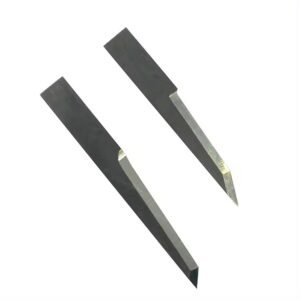
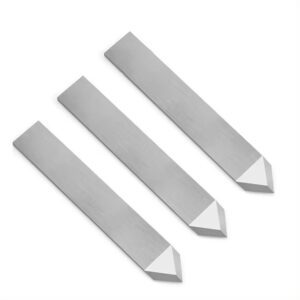
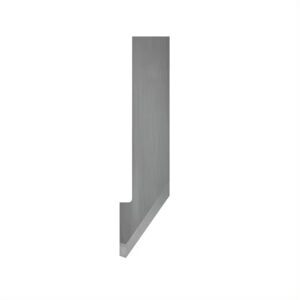

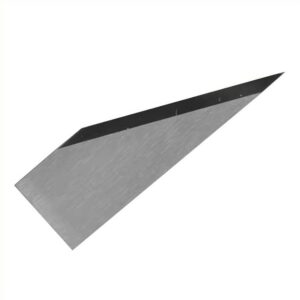


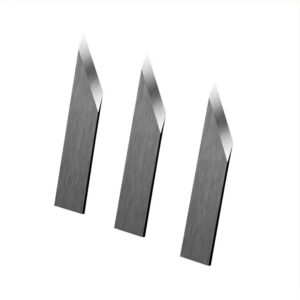
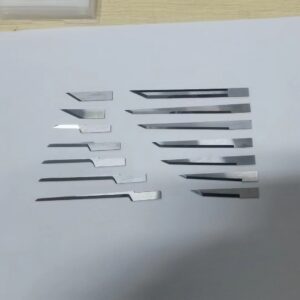
Genießen Sie den Komfort eines nahtlosen Imports. Vom Transport bis zur Zollabwicklung übernehmen wir den gesamten Prozess. Sie müssen lediglich die Mehrwertsteuer entrichten und auf die Ankunft Ihrer Waren warten.
Wir haben unsere Klingen in unzähligen Anwendungen bewiesen und sind bereit für jedes Projekt, das Sie uns vorstellen. Erwarten Sie Genauigkeit, Langlebigkeit und unübertroffen wettbewerbsfähige Preise.
Ob Sie Zeichnungen, Skizzen oder Muster bereitstellen, wir können für Sie entwerfen und fertigen. Wir haben auch die Fähigkeit, bei der Modifizierung bestehender Designs und Spezifikationen zu helfen, um nahezu jede industrielle Werkzeuganwendung zu verbessern. Bitte kontaktieren Sie unser engagiertes Vertriebsteam, um Ihre spezifischen Anforderungen zu besprechen.
Eine Reihe von Tests und Inspektionen werden zur Qualitätskontrolle durchgeführt, darunter die Erstmusterprüfung, die Wareneingangsprüfung und Materialzertifizierung, die In-Prozess-Qualitätsprüfung und die Endqualitätsprüfung.
Ob Sie ein Importeur, Distributor, Großhändler oder Endverbraucher sind, wir heißen Sie herzlich willkommen. Profitieren Sie von minimalen Mindestbestellmengen (MOQs), problemlosen Anfragen und größerer Einkaufsfreiheit.
Betrachten Sie uns als Ihren exklusiven Monitor. Wir werden Ihnen regelmäßig Updates zu jedem wichtigen Knotenpunkt Ihrer Produktionslinie liefern. Egal wie weit entfernt, Sie erhalten Echtzeit-Einblicke in den Fortschritt Ihres Produkts.
Nanjing Metal Industrial CO., Limited
Mingjue Industrial Park, Lishui, Nanjing, Jiangsu, China
Bleiben Sie auf dem Laufenden mit unseren aktuellen Nachrichten.